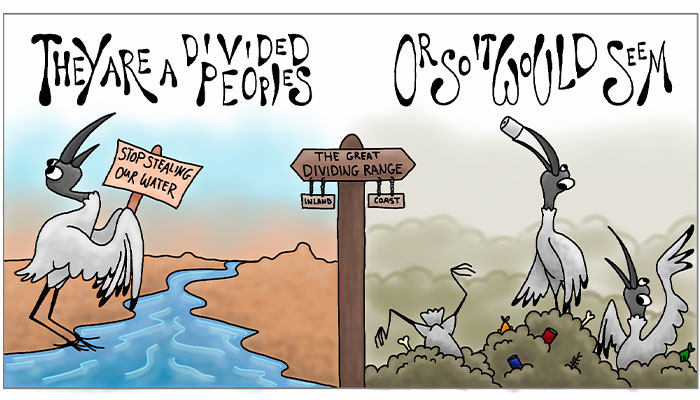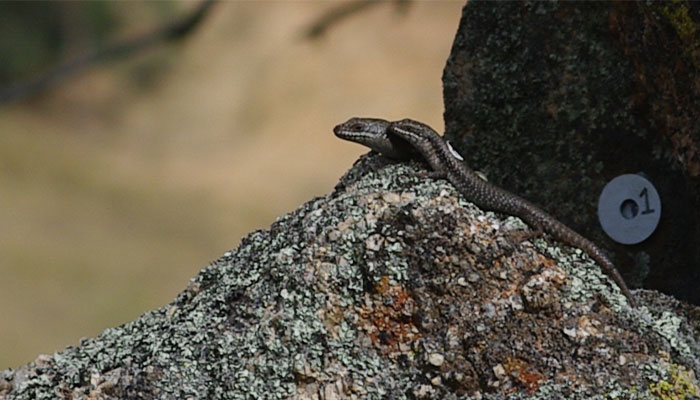For the first time in Australia, humpback whales have been spotted forming super-groups that join together and use bubble net traps to feed on fish.
Community connections: The input of citizen scientists into whale studies is proving invaluable.
“Bubble-net feeding is a co-operative strategy where whales dive down and deliberately blow bubbles to create a net around their prey, usually fish or krill,” says Macquarie University marine scientist Dr Vanessa Pirotta, lead author of a new paper about the event published in the Journal of Aquatic Conservation.
“Then they lunge up open-mouthed towards the surface to scoop the food; it’s remarkable to see,” Pirotta says, adding that bubble-net feeding has not been observed in Australian waters before.
We don’t know why this is happening ... perhaps because they behave differently when they are part of a bigger population.
Pirotta and her colleagues used photos and videos supplied by whale watchers to document these newly-observed behaviours.
“It’s possible that as whale numbers return, we are seeing them perform group behaviours that they might have done before they were hunted so extensively,” she says.
Humpback whales were thought to be ‘feast and famine’ feeders who would fast during migration – but Pirotta says that these new observations challenge that assumption.
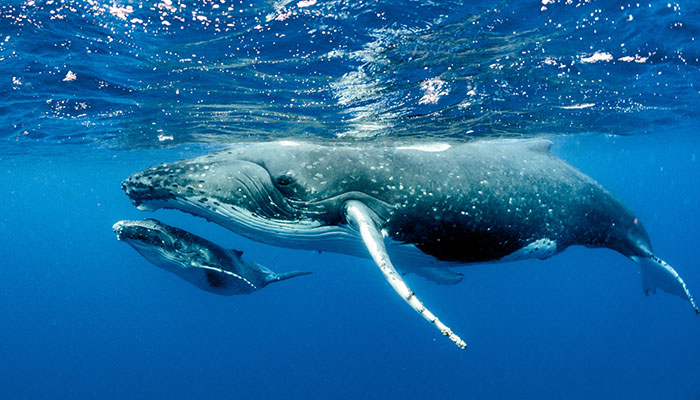
Recovery: Humpback whale populations have grown by about 11 per cent each year for the past decade in Australia.
“We don’t know why they are forming big groups and feeding outside the Southern Ocean, maybe it’s because of changes in the availability of their food source, or perhaps because they behave differently when they are part of a bigger population,” she says.
Pirotta adds that citizen science has played a key role in our understanding of whale behaviour.
“We would not have been able to record this analysis without the photos and drone videos shared with us,” she says.
Never before seen behaviours
Whale-watching hobbyist Brett Dixon supplied footage of the whale supergroups to the researchers.
Dixon is a geographer and ocean conservationist based on the far South Coast of NSW and helps identify southern right whales for the NSW National Parks and Wildlife Service under a citizen science program.
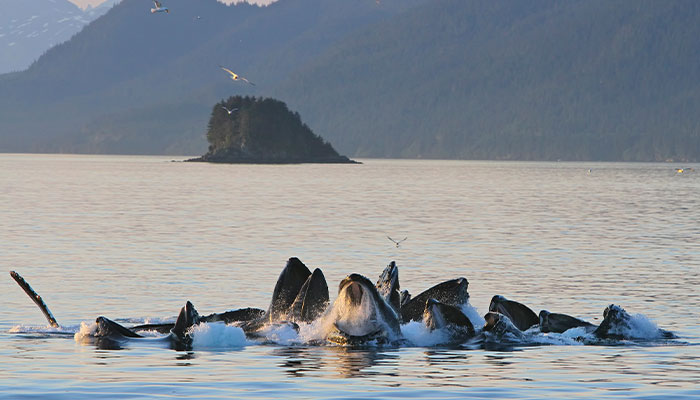
Dinner time: Humpback whales bubble-net feeding in Alaska ... similar behaviour has been observed in Australian waters for the first time.
Drones are a professional tool-of-trade for Dixon, and he says that it’s important to follow state regulations particularly when working with vulnerable wild animals like whales.
In September 2020, he said that local whale watching boats were reporting that a large pod of whales was forming offshore.
After spotting an unusually large number of whale spouts off the coast, Dixon sent a drone over the ocean – and says he was amazed to see humpback whales gathering in several large groups, and estimated there may have been more than a hundred whales.
As the drone flew out about three kilometres offshore and I saw the footage coming in, I knew it was something remarkable.
“The footage I got was one of the larger pods – and there were two other pods of similar size out there,” he says.
Dixon says he was thrilled to record the footage, and anxious to get the drone back in safely so he could share it.
“As the drone flew out about three kilometres offshore and I saw the footage coming in, I knew it was something remarkable.”
More whales, more opportunities
Australia’s humpback whale numbers have grown by around 11 per cent each year for the past decade, more than half a century after commercial whaling was banned worldwide in 1966.
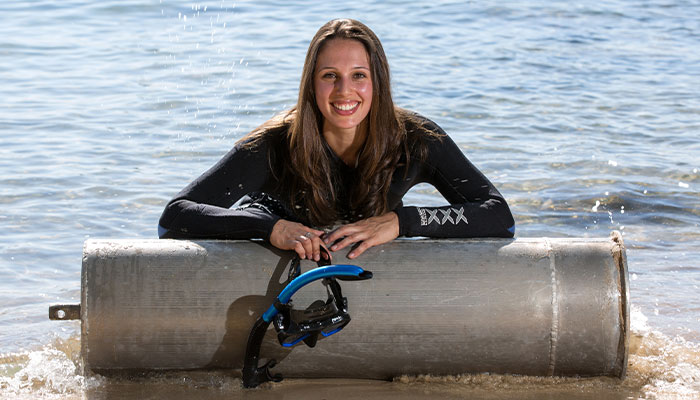
Progress: Dr Vanessa Pirotta (pictured) says that knowing more about where and how whales feed can help scientists work out ways to protect them.
Humpbacks aren’t prolific breeders and recovered slowly from the verge of extinction, with female humpbacks giving birth to a calf every two to three years, after a year-long pregnancy.
The whales spend summer in Antarctica, attracting thousands of human whale-watchers as they travel northward to tropical waters to breed between May and June, returning south in September and October.
- VIDEO: UV-detecting 'Sunwatch' a step closer to saving lives
- Teens reap benefits of good connections with teachers
“During COVID we saw more observations of whales than usual and this study is yet another example of the value of citizen science, and the value of appropriately used drones,” says Pirotta.
Pirotta says that these new findings will help scientists understand better how environmental change, including climate change, impacts on food sources for humpback whales and will help to predict how future changes in the ocean will influence whale populations.
“Knowing more about how and where whales are able to feed, can help us work out ways to reduce harmful effects,” she says.
Dr Vanessa Pirotta is a marine scientist in the Department of Biological Sciences and at Macquarie University Marine Research Centre.

